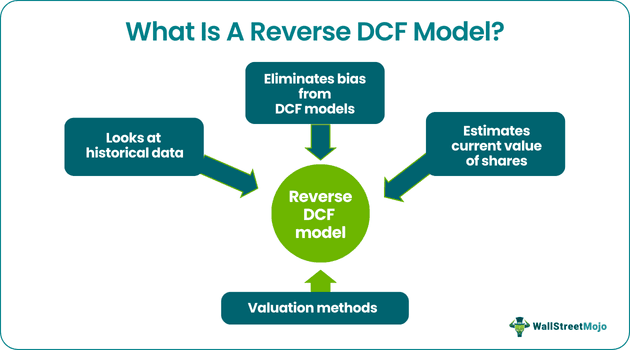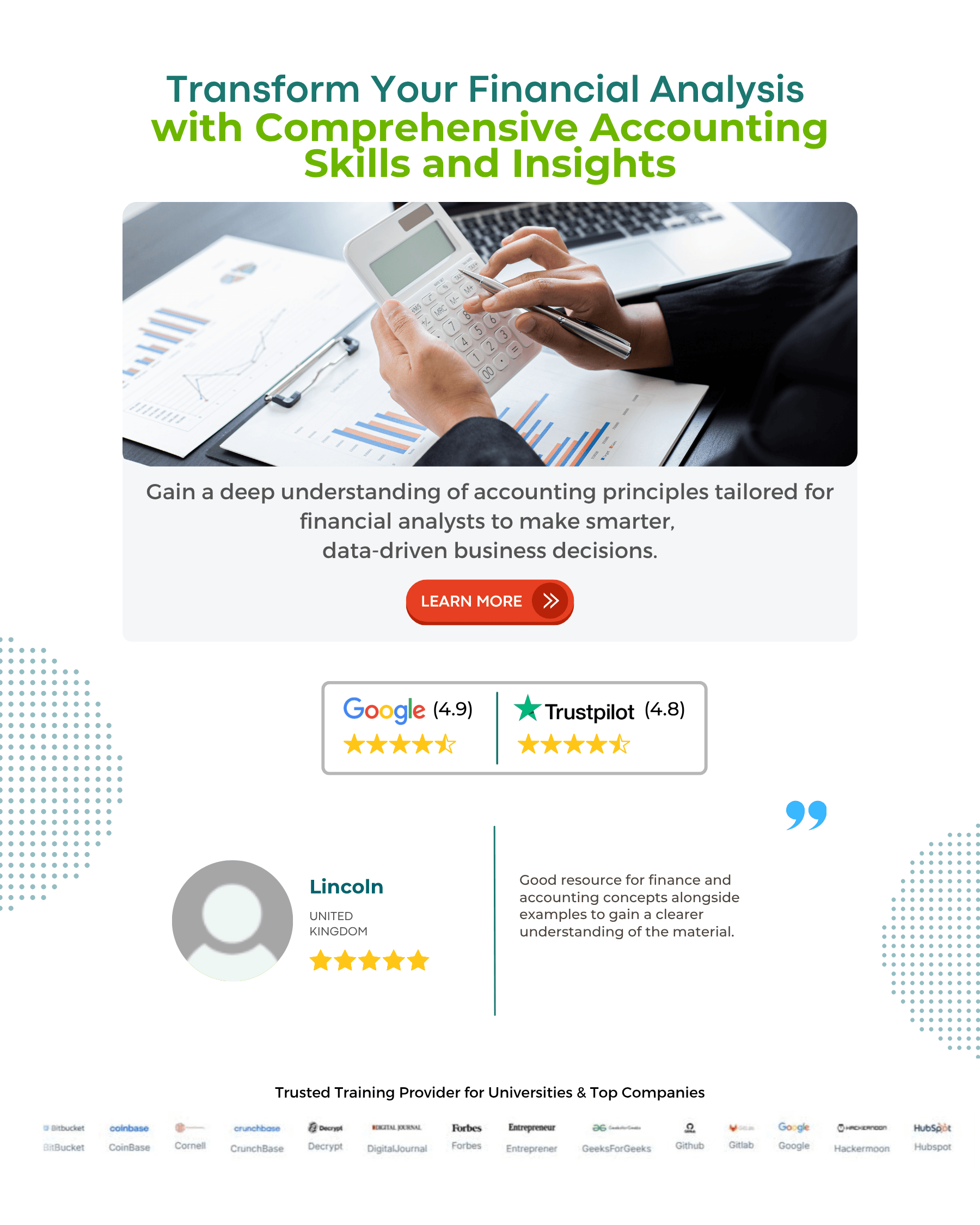Table Of Contents
What Is A Reverse DCF Model?
The Reverse DCF model is a valuation method, aiming to derive the present value of shares to uncover the market's underlying assumptions. One intended purpose of the reverse DCF is to eliminate the bias included in all DCF valuation models.

Reverse engineering a DCF model allows investors to remove uncertainty to some extent. It eliminates uncertainty in future cash flow projections by starting with the price. If the reverse-engineered DCF assumes more significant cash flows than the company can generate, the company is overvalued. Alternatively, if the opposite is true, the business is undervalued.
Key Takeaways
- The Reverse DCF model is a valuation method. It attempts to reverse engineer the present value of shares to determine the assumptions made by the market.
- The Discounted Cash Flow (DCF), is one of the critical evaluation methods that is used to calculate a company's intrinsic value.
- The reverse DCF works backward instead of forwards like the DCF. In reverse DCF, the process begins by taking the company's current market price or value and estimating the expected growth through the free cash flow that justifies the market price.
How Does A Reverse DCF Model Work?
The reverse DCF model, as the name suggests, is a deviation from the DCF valuation model explained in the Financial Modeling and Valuation Course Bundle. The discounted cash flow (DCF), is one of the critical evaluation methods used to calculate a company's intrinsic value. It often helps financial analysts predict future cash flows, discount them and conclude a terminal value to assess the company's inherent value. However, the method has certain drawbacks.
One of the major issues is that DCF highly depends on the data from the future cash flow projections of the past 5–10 years, making it a highly uncertain input. Even though it is possible to predict whether the company is undervalued or overvalued through this, it involves much guesswork and speculation. It may lead to biased results. In addition, the prediction process is also tricky, as estimating the future is not easy. Similarly, another issue regarding it would be calculating an accurate discount rate. Even small mistakes in these factors could change the results by large numbers.
The reverse DCF model aims to change the trajectory of the above issues. The significant difference is that the reverse DCF works backward instead of forwards like the DCF. In this case, the process begins by taking the company's current market price or value and estimating the expected growth through the free cash flow that justifies the market price. Then the terminal rates and discount rates are calculated.
It may not be completely free from biases, but it is a better estimate than DCF. Hence, once the free cash flow growth rate that seems appropriate for the current market price is determined, it can be determined if the company is undervalued or overvalued after considering relevant factors.
How To Value A Stock?
Stocks can be valued using two methods: absolute valuation and relative valuation.
In the absolute valuation method, analysts determine the value of a company's stock by discounting its free cash flows by a discount rate that fits appropriately and then estimate the present value of the same.
On the other hand, in the relative valuation method, to determine whether a stock is worth investing in, analysts compare its value to its competitors.

Image Source: Valuation Course
Various ratios, including price-to-earnings growth, price-to-earnings, price-to-sales, price-to-book value, operating margin, price-to-free cash flow, and enterprise value, are used for comparative valuation. Using this, analysts can evaluate a company's financial worth by comparing its value to its rivals or peers in the same industry.
While valuation metrics can be a great option to value stocks, the financial ratios and the company's financial performance also reveal information on the company's health. Their business models and management styles can also display their success path.
Examples
Let us consider the following examples to understand the concept better:
Example #1
Let us take the example of Dan, an investor who wants to invest in "ABC" Ltd. The present market price of one share of ABC is $100. He wants to know whether the stock is undervalued or overvalued before deciding. He uses the reverse DCF model to estimate the corporation's future cash flows and the discount rate used by the market to value the company.
Dan does this by analyzing the company's past financial statements and other relevant information, including observations of industry trends. After evaluation, he finds that the company is undervalued and decides to buy at this rate.
Example #2
Suppose XYZ Ltd. has a current stock price of $225. The company's financial statements show that the company's free cash flow would grow at an average rate of 5% in the next five years. It assumes that the discount rate is 10% and uses the reverse DCF model to determine the implied assumptions the markets made regarding its growth prospects. Suppose this value is 4.84% (after calculation using online spreadsheets). It means that this value shows that the market expects the XYZ company to grow at a rate of 4.84% after five years.
Reverse DCF Model vs DCF Model
Reverse DCF model
- The Reverse DCF model is a backward-looking valuation method that calculates the market's implied expectations for a company's potential future growth.
- Investors interested in understanding the market expectations for a company's performance in the future can benefit from using the reverse DCF model.
- The Reverse DCF model, on the other hand, bases its analysis on the notion that the market is regular and that the present stock price accurately reflects market perceptions of the company's chances for future expansion.
DCF model
- The DCF model calculates the present value of a company's future cash flows prospectively. It is forward-looking.
- Investors interested in determining a stock's intrinsic value based on the company's future performance can benefit from using the DCF model.
- The future growth rate of a company must be estimated for the DCF model, which can be tricky to predict with any degree of accuracy.

